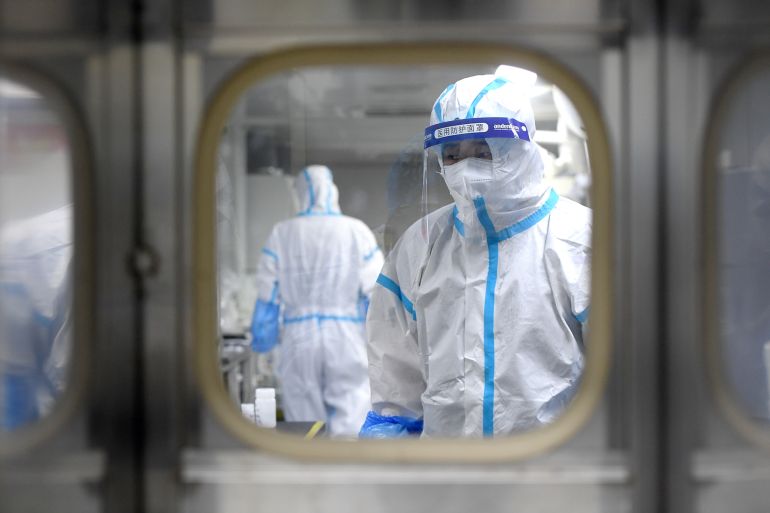China tells WHO no ‘unusual or novel pathogens’ in pneumonia outbreak
Reports that children’s hospitals in Beijing, Liaoning and other cities are ‘overwhelmed with sick children’.

Chinese officials say they have not detected any “unusual or novel diseases” in the country, the World Health Organization has said, after the UN health agency made an official request for information about an outbreak of a mysterious pneumonia in northern China mostly affecting children.
China has been experiencing an increase in cases of influenza-like illnesses compared with the same period in the previous three years when strict measures were in force as part of its zero-COVID strategy.
Keep reading
list of 3 itemsChina doesn’t want a cold war or a hot war with anyone, says Xi
Fire at coal mining company offices kills 25 people in China
That policy was abruptly abandoned in December 2022.
The WHO noted that China’s National Health Commission told a press conference earlier this month that there had been an increase in the incidence of respiratory diseases, attributing them to the lifting of COVID-19 measures and the spread not only of COVID-19 but pathogens such as influenza, mycoplasma pneumoniae (a common bacterial infection which typically affects younger children), and respiratory syncytial virus (RSV).
Earlier this week, ProMED, an online medical community that raised questions in late 2019 about an unknown illness circulating in Wuhan that later became COVID-19, noted a growing number of media reports of clusters of undiagnosed pneumonia among children in northern China.
FTV News, a Taiwanese media outlet, reported that children’s hospitals in Beijing, Liaoning and other places in the north were “overwhelmed with sick children” and parents were questioning whether the authorities were “covering up an epidemic”.
ProMED said more definitive information on the “concerning illness” was needed.
The UN agency said it held a teleconference with Chinese health officials on Thursday, during which the data it requested were provided. Those showed an increase in hospital admissions of children due to diseases including bacterial infection, RSV, influenza and common cold viruses since October.
“No changes in the disease presentation were reported by the Chinese health authorities,” the WHO said. It added that Chinese officials said the spike in patients had not overloaded the country’s hospitals.
The WHO urged people in China to take steps to reduce their risk of contracting a respiratory infection including updating vaccinations, maintaining a distance from other people, wearing masks when necessary and staying at home when sick. Testing was also important, it said.
The first cases of what turned out to be COVID-19 were reported as unexplained pneumonia in late 2019 with the first death from the disease in January 2020 the same month that China shared publicly the genetic sequence of COVID-19.
“Deeply concerned” by the rapid spread and severity of the virus as well as by “the alarming levels of inaction“, the WHO declared a pandemic in March 2020.
A WHO team finally visited Wuhan to investigate the outbreak in early 2021, but the origins of the virus remain unclear.